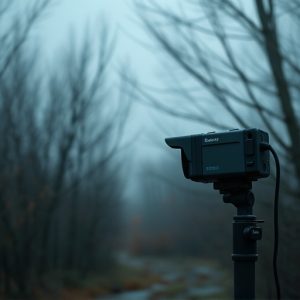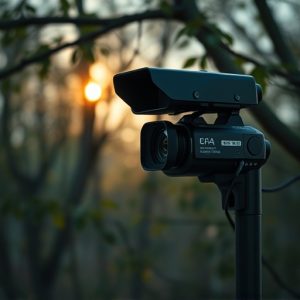Securing Your Home: Microphone Bug Sweeping Detection Techniques
Microphone bug sweeping and hidden camera detection are crucial components of modern home security……..
Microphone bug sweeping and hidden camera detection are crucial components of modern home security. By employing specialized equipment and techniques like thermal imaging, UV lights, RF scanning, and IR inspections, homeowners can identify and deter covert surveillance devices in high-risk areas such as bedrooms, bathrooms, hallways, and common hiding spots like behind pictures or everyday objects. Regular updates to security systems with advanced motion sensors and surveillance technology, along with meticulous physical inspections, help create a secure and private home environment.
In today’s digital era, home security extends beyond traditional locks and alarms. Microphone bug sweeping is a critical technique to ensure privacy against hidden cameras and surveillance devices. This article delves into the intricacies of microphone bug sweeping detection, guiding you through best practices, common locations to check, and advanced techniques for bolstering your home’s security against potential threats. Discover the best hidden camera locations in your home and learn how to secure your living space effectively.
- Understanding Microphone Bug Sweeping and Its Importance in Home Security
- Best Practices for Detecting Hidden Cameras in Your Own Home
- Uncovering Potential Bugs: Common Locations to Check in Your Living Space
- Advanced Techniques for Ensuring Privacy and Securing Your Home Against Surveillance Devices
Understanding Microphone Bug Sweeping and Its Importance in Home Security
Microphone bug sweeping, or audio surveillance detection, is a critical component of modern home security systems. With hidden cameras becoming increasingly sophisticated and compact, the ability to detect and mitigate potential eavesdropping devices has become essential for maintaining privacy. Homeowners often install these devices in strategic locations, such as best hidden camera spots like above door frames, inside ceiling lights, or behind artwork, to safeguard personal conversations and sensitive information from prying ears.
Regular bug sweeping involves utilizing specialized equipment to detect any active listening devices, including microphones hidden within everyday objects. This proactive approach ensures that any security breaches are identified and addressed promptly. By understanding the techniques and importance of microphone bug sweeping, homeowners can take a significant step towards fortifying their home security and protecting their privacy.
Best Practices for Detecting Hidden Cameras in Your Own Home
When it comes to ensuring home security, detecting hidden cameras is a crucial aspect often overlooked. The best practice begins with a thorough inspection of common areas like bedrooms, bathrooms, and hallways—locations where covert cameras might be installed. Utilize specialized equipment such as thermal imaging cameras and UV lights, which can reveal digital traces not visible to the naked eye.
Additionally, stay vigilant in noticing any unusual electrical outlets or cables, strange markings on walls, or even peculiar behavior from home appliances. Regularly update your home security system with advanced motion sensors and surveillance technology capable of identifying and alerting you to potential hidden camera threats. Remember, a proactive approach to home security is key in safeguarding your privacy.
Uncovering Potential Bugs: Common Locations to Check in Your Living Space
Uncovering potential bugs, or hidden cameras, requires a systematic approach as these devices can be cleverly concealed in your own home. The first step is to understand the common locations where these devices might be installed. Often, the best hidden camera locations in homes are places that offer discreet accessibility and line of sight without raising suspicion. This could include behind pictures on walls, inside clock radios, smoke detectors, or even within everyday appliances like TVs or fans.
Don’t overlook corners and crevices either; small gaps behind furniture, under rugs, or within electrical sockets can hide miniature cameras. Additionally, modern technology allows for sophisticated integration into home security systems, so it’s crucial to inspect the hardware of your security devices, such as doorbells, locks, and surveillance cameras, for any signs of tampering or additional components that could indicate a hidden microphone or camera.
Advanced Techniques for Ensuring Privacy and Securing Your Home Against Surveillance Devices
To enhance your home’s security and protect your privacy, it’s crucial to be aware of the best hidden camera locations. Surveillance devices can be discreetly placed in various areas, making it a challenging task to identify them. One effective strategy is to conduct regular bug sweeps using specialized equipment designed to detect electromagnetic signals emitted by hidden cameras and microphones. These advanced techniques include radio frequency (RF) scanning and infrared (IR) inspections, which can uncover devices disguised as everyday objects like smoke detectors or light bulbs.
Additionally, physical inspections should be conducted to check common hiding spots such as wall sockets, electrical boxes, and behind furniture. It’s essential to keep your home’s wiring secure and up-to-date to prevent unauthorized access. By combining these advanced techniques with robust home security practices, you can create a safe and private living environment.
Microphone bug sweeping is a critical aspect of modern home security, ensuring privacy against sophisticated surveillance devices. By understanding common hidden camera locations and employing advanced detection techniques, homeowners can fortify their living spaces. Regular checks in strategic areas, coupled with best practices for early identification, make it possible to secure your home effectively against potential bugs. Stay proactive, stay vigilant, and prioritize your peace of mind by integrating these methods into your home security routine.


